Recreating the Country blog |
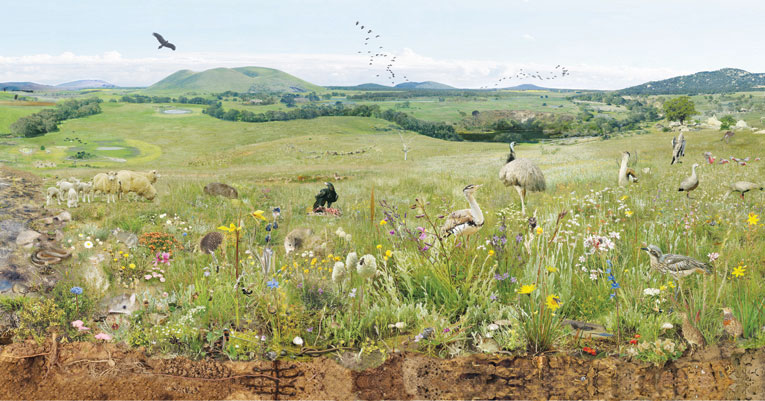 A beautiful grassland, depicted in Volcano Dreaming. Designed by Peter Haffenden and Kerrie Poliness. A beautiful grassland, depicted in Volcano Dreaming. Designed by Peter Haffenden and Kerrie Poliness. Reimagining native grasslands. The native grasslands that we have inherited, have been radically changed; by hotter fires, intensive grazing and clearing for cropping. It is likely that there are no examples of the original mix of diverse grassland plants remaining in Victoria. A sobering thought perhaps, though it does provide the opportunity to reimagine Victorian native grasslands and to invent practical methods to bring them back to our urban and rural landscapes. Restoring grassland would be a powerful way to lock-up tonnes of carbon and it would restore habitat in the form of grasslands and grassy woodlands for our endangered plants and animals that depend on these disappearing ecosystems. The clock is ticking and the time for action was yesterday! In Part 2, I explore what we can learn from the people and scientists who have been successful at bringing back native grasslands. In Part 3, I outline a low cost and adaptable method that could be used to restore grasslands at a small or a large scale. (Coming in December) Farmers are now beginning to see the benefits of protecting native grasslands. Restoring native grasslands and grassy woodlands is a significant challenge that many of us have pondered. There is now a groundswell of scientists and land users who recognise that farming practices developed for the UK and European climates and soils are unsuitable for the fragile soils and more arid conditions in Australia. This has given rise to the practice of Regenerative Agriculture, which protects native perennial grasses by working with their natural growing cycles. Though, the native grasslands surviving on private property have endured generations of farmers who didn't protect or value them, so these grasslands are likely to be composed of the few resilient survivors that are less palatable to sheep and to cattle. They are likely to be just a shadow of the plant diversity of grasses and forbs, described earlier in Restoring Native Grasslands - Part 1, as ‘herb rich pantry-lands’ or ‘medicinal herb-lands’. 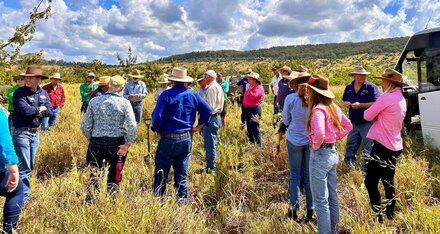 Colin Seis explaining 'Pasture Cropping' at Winona Colin Seis explaining 'Pasture Cropping' at Winona Irrepressible nature - The Winona story It is astonishing how irrepressible our native plants are. Colin Seis of ‘Winona’, a farm in the dry central west of NSW, stumbled onto a sustainable farming system that he calls ‘Pasture Cropping’. Using a combination of;
Colin Seis has successfully restored his grasslands. His paddocks now boast over 200 different plant species, which includes a tenfold increase in the original species of native grasses and forbs. Reminder: A forb in botany is a flowering native herb. It excludes grasses, sedges and rushes, as well as woody stemmed plants like shrubs and trees. Charles Massy in his book ‘Call of the Reed Warbler’ describes the dramatic changes at Winona; ‘(There is) evidence of true regeneration with the reappearance of highly palatable but long-lost warm season C4 (native) grasses, which are always the first to disappear under traditional set-stocking. In addition, the (perennial) grass and cropping (system) harbours a huge escalation (125%) in insect biodiversity with 600% greater biomass. This has meant that insect infestation and damage to his crops is now negligible.’ Microbiologist Dr Christine Jones was intrigued by the resurgence of native grasslands at Winona and explained why many species had reappeared; ‘… through his minimum soil disturbance, dramatic reduction in the use of chemicals and fertiliser, he has somehow stimulated mycorrhizal fungi health, getting everything functioning. Getting sugars and all that stuff along the row, which is an ideal situation for plants to germinate in.’ 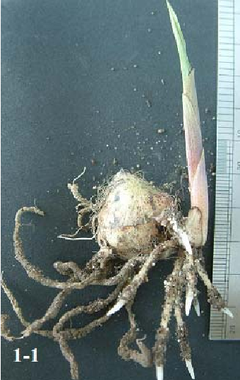 Growing orchid arbuscular mycorrhizal (AM) fungi involves taking AM-rich root samples to harvest the fungi. Photo Melbourne Herbarium Growing orchid arbuscular mycorrhizal (AM) fungi involves taking AM-rich root samples to harvest the fungi. Photo Melbourne Herbarium Christine Jones’ suggestion that mycorrhizal fungi have been the catalyst for the return of native plant species is important knowledge in the challenge of restoring grasslands. We know that at least 90% of Australian native plant species have a close symbiotic relationship with mycorrhizal fungi. These fungi support their health, through the absorption of nutrients, and they can be essential for their germination, as is the case for over 400 species of Victorian orchids. Why shouldn’t mycorrhizal fungi also be the catalyst for the germination of many species of grasses and forbs? We can conclude from the work of Colin Seis’ and others that the seed of many native grassland species, as well as the spores of a diverse mix of microorganisms, may be lying dormant in our soils, waiting for the right conditions to regenerate. Recommended reading; ‘Microbes and Plants’ for more insights into the critical role of microbes in our soils. Tea anyone? ... for inoculating soil!  Teas made from compost, 'worm juice' and manures are rich in microorganisms Teas made from compost, 'worm juice' and manures are rich in microorganisms A teaspoon of good garden soil, according to microbial geneticists, contains 1 billion bacteria, several yards of fungal hyphae, several thousand protozoa, and a few dozen nematodes. The same quantity of the Biodynamic ‘500’ preparation has an estimated 2.5 billion microbes which include: bacteria, fungi, nematodes and protozoa. (Ehrenfried Pfeiffer 1899-1961) A teaspoon of '500' is stirred into water to produce a dilute microbe-rich tea. This is sprayed onto bare moist soil on a cloudy/rainy day, to avoid direct contact with sunshine, which would kill the microbes. This same practice could be followed with worm, compost and manure teas. Sophie Small, the remarkable Bellarine Landcare facilitator, has been inspired by the writing of Nicole Masters, For the love of Soil. Sophie writes; Turning back the clock - microbial action to regenerate native species. Nicole Masters shares the story of Steve Charter, a rancher from Montana, who grazed his 200 - 400 cows across 8,000 acres of arid land with soils degraded from historical misuse. Steve adopted Allan Savory’s holistic grazing methods in the 1980s to address the degradation of his soils. But it wasn’t until 2014 when he built a custom ‘slurry’ sprayer and mounted it on an old army truck and started applying materials such as liquid composts, molasses, fish, seaweed, rock salt and worm compost across 100's of acres that he started to see dramatic changes to his property. “Through action from the bio-stimulants, the once locally extinct native grasses are returning in droves.” The incidence of bare soil was reduced and the grass “in places is knee-high to waist height”. Steve has treated over 4,000 acres of his property with these products and after many years of trying to recover the health of his land, he finally feels buoyed by the positive changes he’s seen in his soil health and vegetation cover. Nicole Masters also shares an inspiring story from Western Australia. Di and Ian Haggerty, regenerative farmers from WA, purchased a degraded block of cropping land, choked with weeds which seemed impossible to remove. They took action by planting crops accompanied by worm extract, applying compost extract and introducing sheep to graze the land. Two years later three species of native grasses started reappearing and after three years C4 native grasses, genus Setaria, “germinated across thousands of acres. This land had been terribly abused for over 60 years, yet the native seed bank was just waiting for the right signals to germinate.” (Nicole Masters. 2019. For the Love of Soil. Strategies to Regenerate our Food Production Systems, pub. Printable Reality)  John Delpratt John Delpratt The Grassy Groundcover Research Project Restoring the diverse families of microbes to the soil appears to be a key catalyst to native grassland recovery, though two major stumbling blocks still need to be overcome;
A system that was specifically designed to overcome these hurdles has consistently succeeded in restoring native grasslands at a number of sites throughout Victoria. John Delpratt, one of the developers of the system, describes its application to restoring roadside vegetation at Woorndoo in two blogs; Kangaroo Grass communities on roadside reserves - Part 1. Kangaroo Grass communities on roadside reserves - Part 2. In these blogs, John also writes about the critical importance of restoring roadside grasslands because of the many aesthetic, practical and environmental benefits they would provide for our nation as a whole. 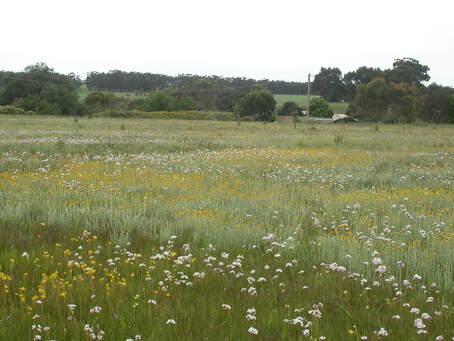 A restored grassland using the Grassy Groundcover method developed by John Delpratt and Paul Gibson-Roy A restored grassland using the Grassy Groundcover method developed by John Delpratt and Paul Gibson-Roy A proven method John Delpratt and Dr Paul Gibson Roy have fine-tuned their method through trials and practice. Here is a brief summary of how it's done;
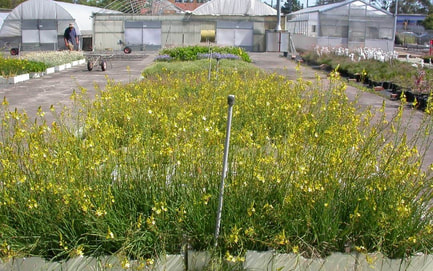 Seed production for grassland restoration at the Burnley campus of the University of Melbourne. Seed production for grassland restoration at the Burnley campus of the University of Melbourne. Growing grassland plants for bulk seed production - how is it done? John Delpratt has offered to describe the process of seed production in a future blog - stay tuned You can also read about this method in the excellent book: ‘Land of sweeping plains – Managing and restoring the native grasslands of south-eastern Australia. Chapters 11 & 12 on grassland restoration by John Delpratt and Paul Gibson-Roy. Though the results of the scalping method are very impressive and the transformation from a weedy grazing paddock to a pure native grassland takes less than twelve months, it requires the coordination of skills and resources that many land managers don’t have available to them. In Part 3 next month you will read about a simpler, though slower method which is more in the spirit of the wisdom of the Taoist philosopher Tao Tzu; ‘Nature doesn’t hurry, yet everything is accomplished.’ 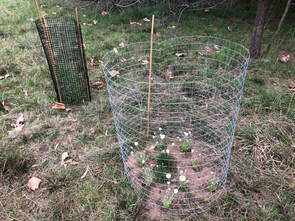 Hoary Sunray, Leucochrysum albicans subsp. tricolor, is a grassland champion Hoary Sunray, Leucochrysum albicans subsp. tricolor, is a grassland champion Restoring Native Grasslands - Part 3. Look out for the Table of Champions - a list of hardy indigenous grassland plants that have the potential to turn the tables on those unwelcome sneaky exotic weeds. The champion’s list presently includes; 76 species, 50 genera and 22 families from central Victoria.
0 Comments
Leave a Reply. |
Click on the image below to discover 'Recreating the Country' the book.
Stephen Murphy is an author, an ecologist and a nurseryman. He has been a designer of natural landscapes for over 30 years. He loves the bush, supports Landcare and is a volunteer helping to conserve local reserves.
He continues to write about ecology, natural history and sustainable biorich landscape design. 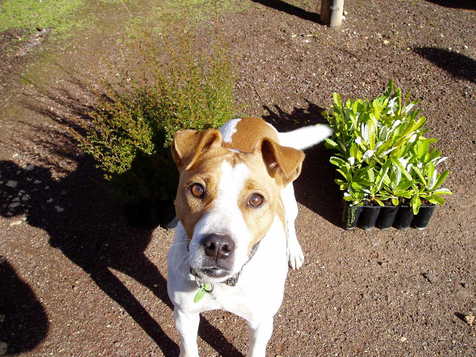
|
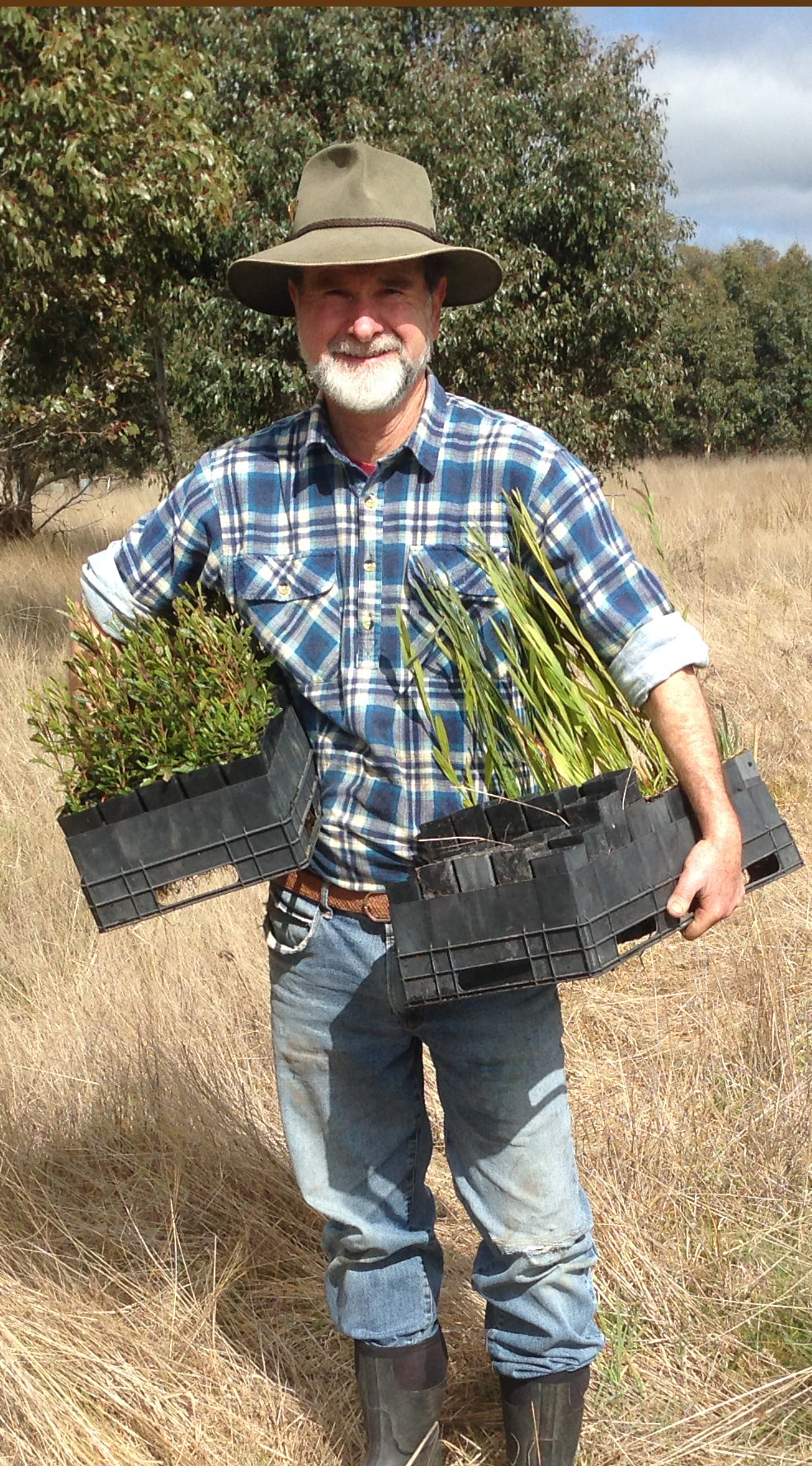

 RSS Feed
RSS Feed
